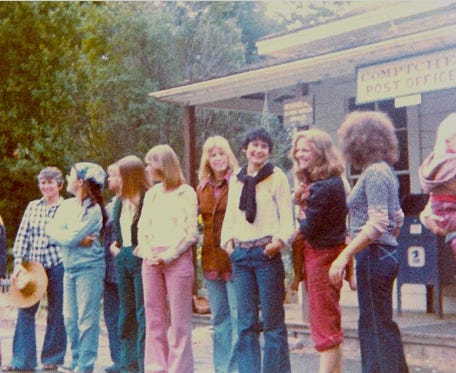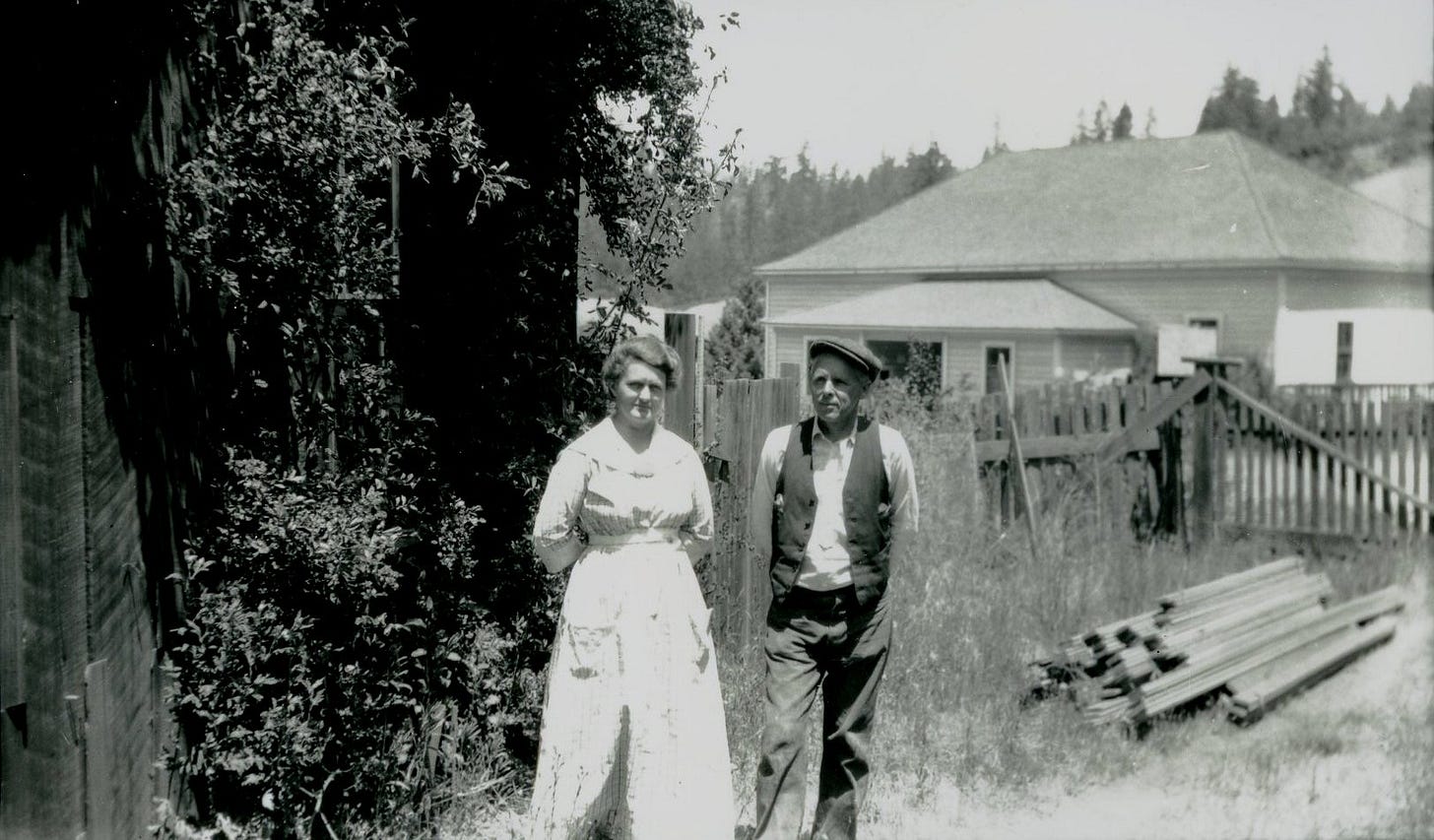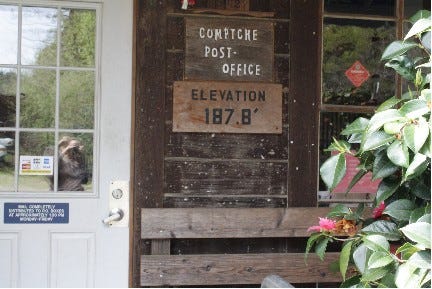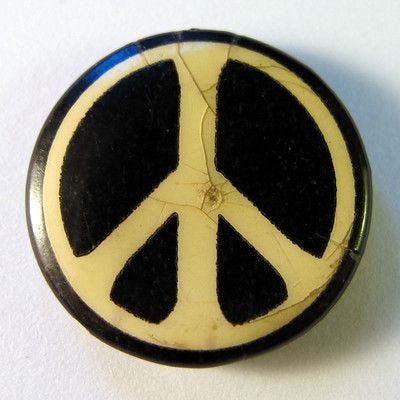5.3 Gathering Places: The Store and the Post Office
Collective Effervescence: Research About the Counterculture

With a number of new subscribers, and to refresh earlier subscribers, the title Collective Effervescence refers to Emile Durkheim’s term collective effervescence, which defines a sense of belonging and happiness that happens during shared group experiences. It’s the moment at a social event when you look around and everyone is in the groove, enjoying. Having the experience together and in person produces these feelings. The phenomenon is a social benefit. This study reveals how collective effervescence bridged a divided town in the 1970s.
5.3 Gathering Places: The Store and the Post Office
The gathering places mentioned most frequently by study participants were the Comptche Store and the Post Office, situated directly across the street at the town junction, where Flynn Creek Road meets the Comptche-Ukiah Road.
The first U. S. Post Office at Comptche was established by one of Comptche’s first settlers, Newman Hoak, on March 19, 1877, who was Comptche’s first Post Master. In 1926, a mule team moved the original post office building in 1926 from his ranch to its current location at the center of town, at the crossroads shown above. The same building serves as the town’s post office to this day.

Eiler and Edna Oppenlander owned and operated the Comptche post office and general store (in one building). He was the Comptche postmaster from 1911 until he died in 1937.

A new store was build across the street from the post office and in the 1970s, this was owned and operated by Bob and Edith Enochs. The store’s front porch was, and still is, an important gathering place, with a phone booth and massive rough-hewn redwood bench built by Bob Enochs. The store’s current owner, Belinda Pollack, is an Oppenheimer descendant who is on par with Edith Enochs as a leading community member.
To this day, the Comptche Store bench is a place where the community has spontaneous conversations, where relationships grow, where initials are carved, sodas are sipped and memories are made. It’s a place that is open to everyone. Visitors feel comfortable sitting there with an ice cream bar. The Comptche Store bench is common ground.
Edith Enochs was behind the counter every day but Sunday when the store was closed. Study participants identified her as one of the people who used diplomacy to help bridge the gap between old-timer and newcomer residents.
“Edith Enochs always had something good to say; since she was an old-timer people would listen to what she had to say. But she was also a business woman.”
The store is a regular gathering place in the geographical center of town.
Conflict also happened in front of the store. Because Edith Enochs was widely respected, she was able to diffuse it. A respondent wrote a story she recalled from sitting on the bench one day:
The roping of a hippie by a group from the Grimes Ranch:
He was a teacher’s aide at the Comptche School. He was Jewish, a young man from New York. The Grimes guys in a pick-up roped him and made him run along behind the truck as they drove in front of the Comptche Store.
Edith Enochs stepped out and yelled, “What are you doing?!”
Someone in the pickup yelled back, “We got us a hippie!”
She said, “He may be a hippie but he’s our hippie! Let him go!”
And they did.
Another respondent, who was a back-to-the-lander kid, told me about taking his new bike down to the store. He sat on the bench in the shade, excited to show off his bike:
“Because everyone would come to the store eventually!”
An elder old-timer drove up in his big-rig pickup and parked near the bike. He went into the store, came out, got back in his truck, backed up, and totally flattened the new bike.
“So he gets out of his pick up, goes around and looks at my bike. He lifts his cap, scratches his head and says, ‘Must be god’s will.’ He didn’t look around, just got in his pickup and drove off.”
Aside from depositing mail in P.O. boxes and selling postage stamps and money orders, the Post Office porch bulletin board was (and is) an important means of local communication, and is a another reason why people go to the post office. You could leave a message for someone or everyone.
It wasn’t until 1955 that phone service arrived in Comptche, and it was party-line service only. Many Comptche residents remained without a telephone through the 1970s by choice, particularly back-to-the-landers—my family included. We used the pay phone at the store. Today, cell phone users drive to a nearby summit for reception.
A small bench on the post office porch is where people left things others could use: bags of apples and pears from over-abundant fruit trees, zucchini, empty egg cartons for use by many who keep chickens, paperback novels, magazine back-issues.
The free bench tradition grew out of control in the 2000s, rivaling a thrift store. There was an app for that and now, garden surplus is posted online instead of at the post office. The bench is once again just a place to sit and the Post Office remains an important stop in daily life.
Next up - Gathering Places: Swimming Holes
Resources for this post:
Durkheim, Emile, 1912 The Elementary Forms of Religious Life
Spicer, Lisa Gruwell 2012. Finding Common Ground: When the Hippie Counterculture Immigrated to a Rural Redwood Community.
Turner, Victor, 1969. The Ritual Process: Structure and Anti-Stricture.







